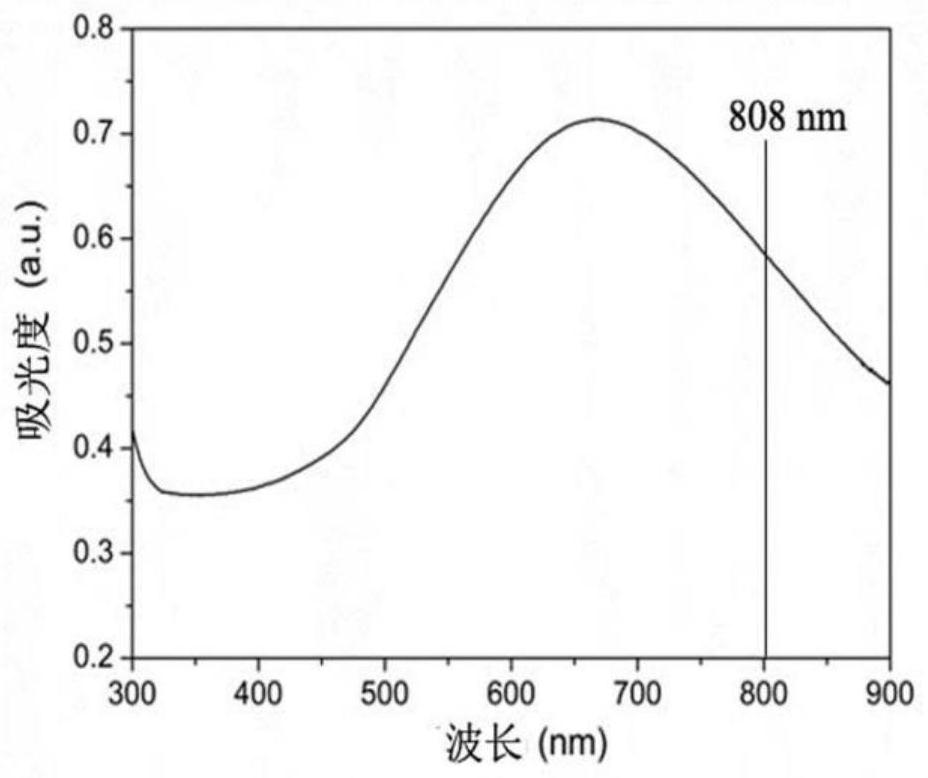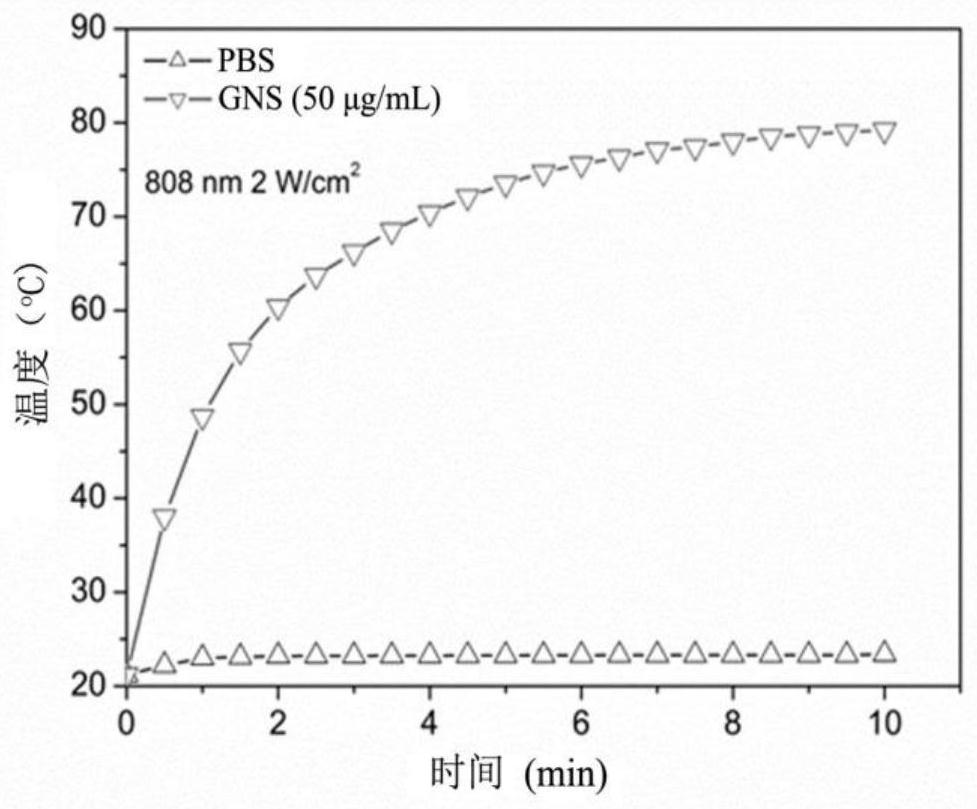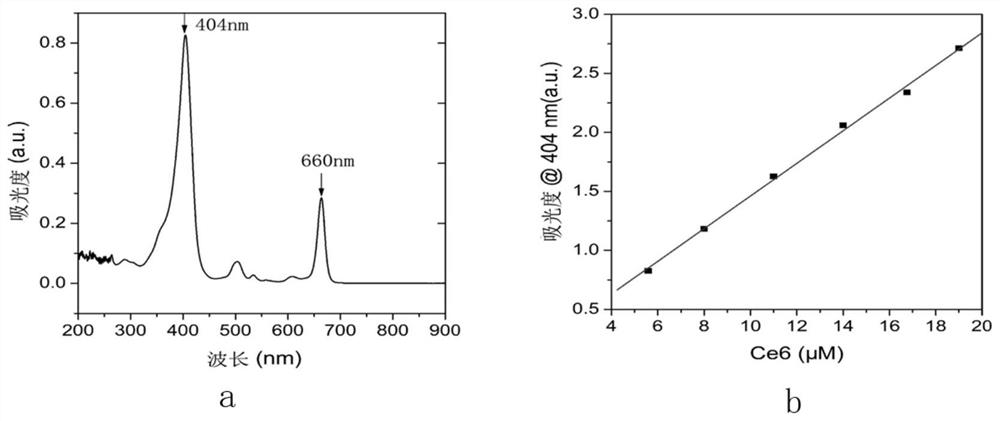Chlorin e6-nanogold compound for photothermal and photodynamic therapy of tumors and preparation method of chlorin e6-nanogold compound
A photodynamic therapy and photothermal synergy technology, applied in the fields of chemical synthesis and biomedicine, can solve the problems of low uptake rate of photosensitizers and gold nanoparticles, and achieve the effects of enhanced photodynamic efficacy, strong photostability, and mild reaction conditions.
- Summary
- Abstract
- Description
- Claims
- Application Information
AI Technical Summary
Problems solved by technology
Method used
Image
Examples
Embodiment 1
[0035] Preparation and Characterization of Hollow Spike-shaped Gold Nanoparticles: Prepared by Displacement Reaction of Chlorauric Acid and Silver Nanoparticles. Concrete steps: (1) Silver nanoparticles with a particle size of about 30nm are prepared by sodium citrate reduction method: take newly prepared 180 μL of 1% AgNO 3 Add the solution into 25mL of deionized water, stir and boil, then quickly add 5mL of 1% sodium citrate solution, keep boiling for 30min, and cool to room temperature; (2) After centrifuging and washing 5mL of silver nanoparticles, resuspend and disperse in 4mL of water and slowly add HAuCl dropwise 4 Solution (140 μL 1% HAuCl 4 Add the solution to 1mL of ultrapure water to dilute it), shake and mix well, and the color of the solution gradually changes from bright yellow to light gray. Immediately after that, 1 mL of 10 mM ascorbic acid solution was added, mixed rapidly, and allowed to stand to obtain a hollow spike-shaped gold nano-stock solution with a...
Embodiment 2
[0039] In order to compare the advantages of the designed nanocomposites, gold nanoparticles (GNS for short) modified only with LA-PEG-OMe were selected as a negative control. The specific preparation method is basically the same as in Example 1. Specifically, take 2mL of the newly prepared nano-gold stock solution, add 180uL of LA-PEG-OMe storage solution, shake and react at room temperature overnight, centrifuge to remove the supernatant, and resuspend in ultrapure water , that is.
Embodiment 3
[0041] GNS-Ce6 tumor cell uptake fluorescent imaging test: Inoculate KB oral cancer cells on a special confocal culture plate, incubate in a 37°C incubator for 24 hours, remove the original medium, wash twice with PBS, add GNS (50 μg / mL ), GNS-Ce6 (50 μg / mL) and the same amount of Ce6 (0.6 μg / mL) in DMEM cell culture medium, incubated for 24 hours, discarded the original medium, and washed twice with PBS. Add an appropriate amount of Hoechst 33342 nuclear staining solution to fully cover the adherent cells, incubate in a 37°C incubator for 20 minutes, discard the staining solution, and wash with PBS 2-3 times for confocal fluorescence imaging and bright field imaging detection. Imaging results such as Figure 4 As shown, the nuclei show blue fluorescence, and Ce6 shows red fluorescence. Fluorescent imaging showed that compared with the Ce6-treated group, cells in the GNS-Ce6 group showed a stronger red fluorescence signal, which indicated that Ce6 loading on the surface of GN...
PUM
 Login to View More
Login to View More Abstract
Description
Claims
Application Information
 Login to View More
Login to View More - R&D
- Intellectual Property
- Life Sciences
- Materials
- Tech Scout
- Unparalleled Data Quality
- Higher Quality Content
- 60% Fewer Hallucinations
Browse by: Latest US Patents, China's latest patents, Technical Efficacy Thesaurus, Application Domain, Technology Topic, Popular Technical Reports.
© 2025 PatSnap. All rights reserved.Legal|Privacy policy|Modern Slavery Act Transparency Statement|Sitemap|About US| Contact US: help@patsnap.com



